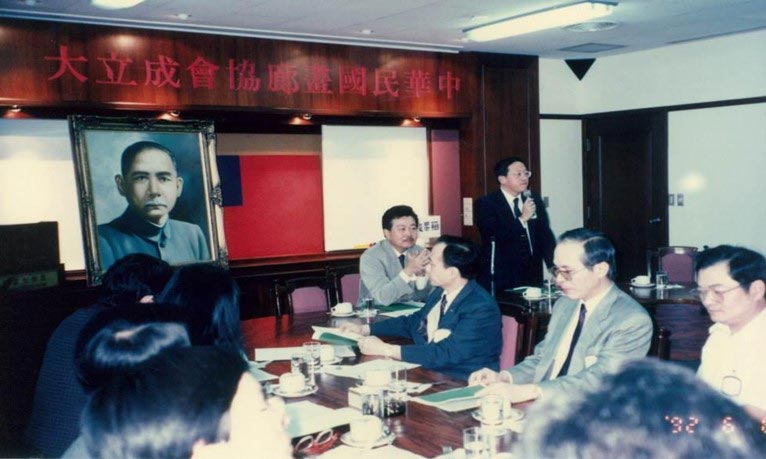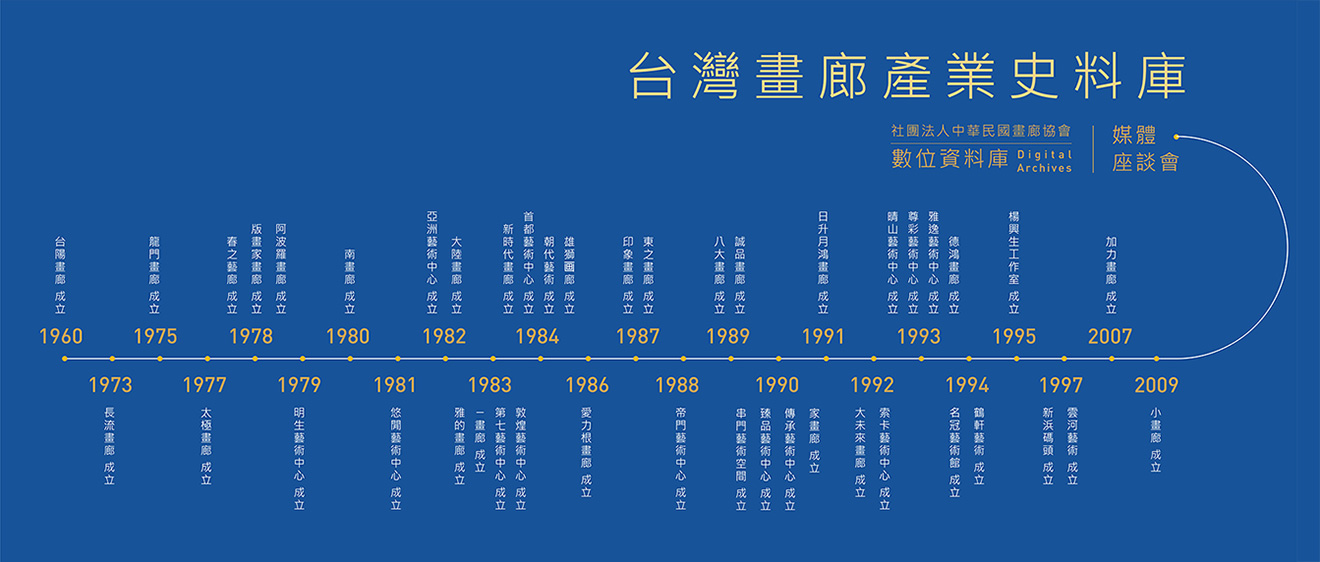Digital Archive
History in the Galleries - Taiwan Art Gallery Archives (arTchive)
The Taiwan Art Gallery Association (TAGA) was established in 1992. This was an important year for the maturing art market in Taiwan (HU, 2016). The 3 elements necessary for a robust market were finally in place: primary market (galleries), auction houses, and art fairs. The first Art Fair in Asia was hosted in Taipei by TAGA in 1992. This was the earliest art gallery-centered exhibition in Asia. Subsequently, Taipei Art Economy Research Centre (TAERC) was established in 2010, specifically focusing on art industry research and education. TAERC’s mission included fostering discourse on developing art industry policies, promoting the development of a stable industry structure, setting up the Institute of Gallerists, establishing arTchive research, and art market data analysis.
Subsequent to compiling the oral history in 2011, TAERC’s researchers continued their work, uncovering artists who had previously been neglected in official art histories. In other words, art gallery records became important archives.

When the arTchive project was launched in 2016, existing archives were digitized, allowing better searchability and helping to prevent accidental loss. Public access to online search and reading is provided in arTchive’s “Digital Archives,” “Project-Based Research,” and “Collections.” TAGA is first organization to offer such services in Asia. TAGA serves an essential role in integrating the history of Taiwan’s art galleries and exhibitions, into the contemporary art scene. An archive centered around art gallery and exhibition history serves scholars, artists, art buyers, and gallery owners.
The “worker ants” of TAGA continue to collect, sort, and cross-reference the essence of Taiwan’s art gallery history. Every piece of data and every line of record is enriched with the concentration and passion emanating from TAGA, art galleries, and everyone in the arts industry. In the words of TAGA’s 15th Chairperson Mr. CHANG Oliver (張逸羣) , “We hope that arTchive can be the source and nutrient to cultural resource diversity, especially during COVID. Through arTchive, we can build creativity and diversity in art assets, and form an interdisciplinary and integrated cultural platform for generations to come.”

